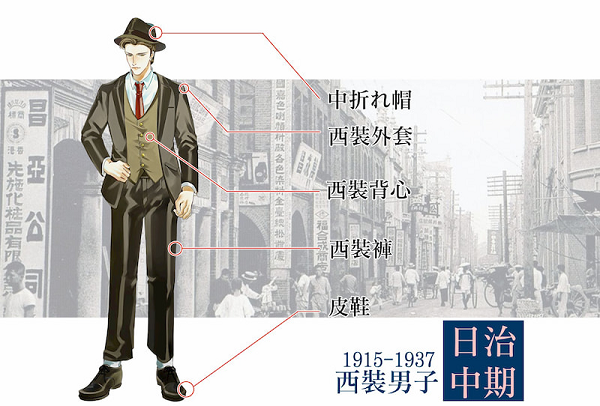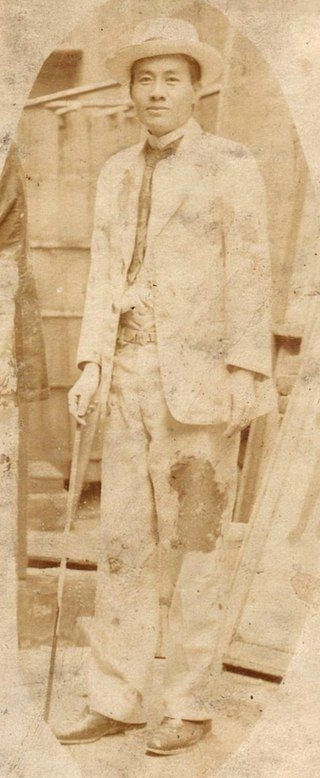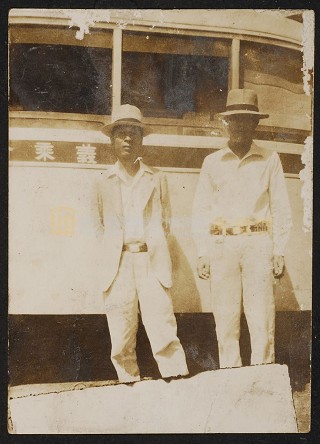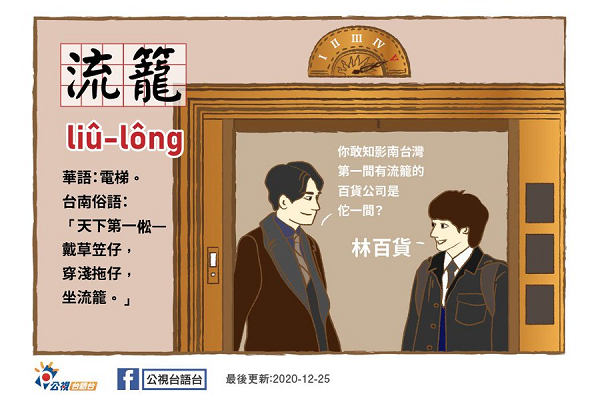
During the Japanese colonial period, men were not allowed to wear braids, so they were styled with suits and hats
 |
In the early 20th century, "hats" were a must-have accessory for fashionable men and were often worn with formal attire. In addition, the ability to own a hat is culturally considered a sign of wealth and is considered a "status symbol" because it is fashionable.
|
 |
During the Japanese colonial era (1895-1945), Japan's rule of Taiwan brought many cultural and social changes. Among them, shaving one's hair and wearing Western clothes are one of the most representative changes. In 1896, the Japanese colonial government issued a hair-shaving order, requiring Taiwanese men to shave off their traditional "long hair knots" to conform to Japanese clothing and social norms.
|
 |
During the Japanese colonial era, Western-style clothing gradually became popular among Taiwanese men. Clothes such as suits and gentleman's hats symbolize modernization and improvement in social status. Men who wear these garments are often seen as educated or of higher social status.
|

|
 |
After the Japanese government took over Taiwan, "wearing braids" was considered a bad habit and men were required to "cut their hair." The booming development of Taiwan's hat-making industry happened to be riding on this trend. After the hair is cut off, the weight on the top of the head is suddenly reduced. People will wear bird hats to adjust their mood. For a while, the sales of hats are very good.
The drastic impact caused by the shift in modern concepts caused the straw hat to catch up with the trend of hair loss and suddenly became one of the costumes of people during the Japanese colonial period.
|
 |
Mr. Jiang Weishui, who appears in social studies textbooks, looks at old photos from a hundred years ago. He is wearing a suit and hat, showing a young and elegant fashion sense.
|

|

|
 |
"Taiwan Daily News" observed a street in Taipei in 1910 and found that unlike ordinary young male and female students who wore suits and dresses, young men with a "juvenile style" (as opposed to "old school") style wore "Lin Tou straw hats", had pigtails, and butterfly-toed satin shoes, so they were ostentatious.
|
 |
Taiwanese proverbs:「The most shameless thing in the world is to wear straw hats and slippers and take the "Liû-lông".」
|
 |
"Liû-lông" refers to the elevator. Only the first department store in Taiwan at that time, Lin Department Store in Tainan City, was the first department store with an elevator. All kinds of modern Western goods were on the first to fifth floors. In 1932, it could be said to be a modern department store with both modern and comprehensive product categories.
|
 |
At that time, everyone came here to see the "elevator", also known as the "Liû-lông", in order to experience the leisure and entertainment of taking this "Liû-lông" to visit department stores. That's why there is such a saying: 「The most shameless thing in the world is to wear straw hats and slippers and take the "Liû-lông".」
|
 |
Wearing a straw hat, some people say it is a bamboo hat, but it may also be a straw hat. After all, men's fashionable and casual dress during the Japanese colonial period was indispensable.
|

|
| Image source::https://x.com/ptstaigi/status/1342398833590894592 |

